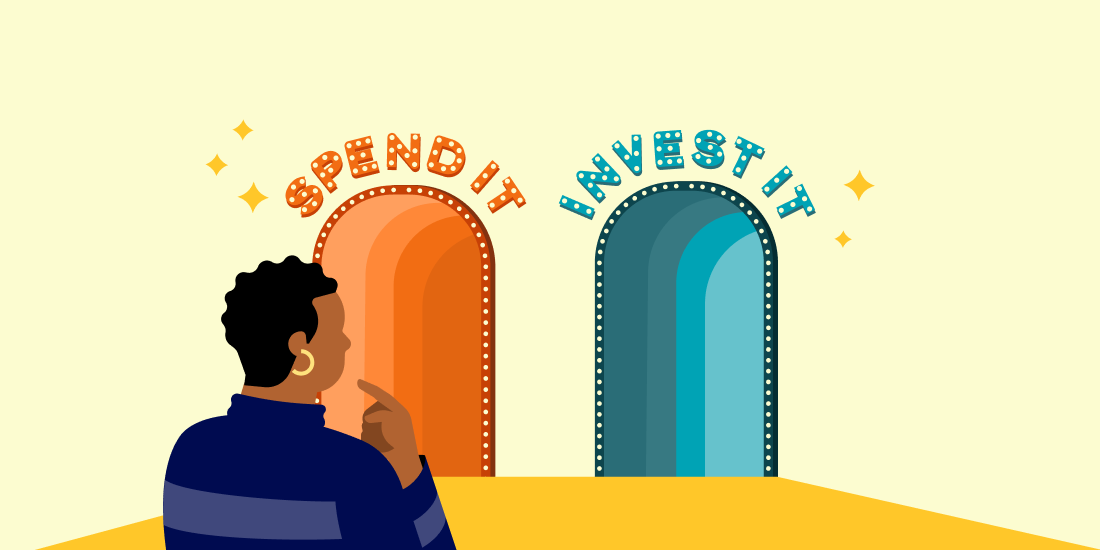Three ways to put your bonus to work
Cash windfalls can have the power to supercharge your savings goals.

Year-end bonuses are a blessing. And while there’s no guarantee you’ll get one—just ask Clark Griswold—if you do, they can have the power to supercharge your savings goals.
So while you wait for that bonus cash, read up on three ways to handle small cash windfalls such as these.
Go 50/50: Treat yourself now and save for the future
Let’s address the elephant in the room: A lot of us spend the bulk of our bonuses.
But there’s a psychological workaround to this temptation: Think of yourself as two people.
- There’s “present-day” you, flush with cash and eyeing a few items on your wish list.
- Then there’s “future” you and all of their dreams for major purchases or financial freedom.
Since both of you can rightly lay claim to your bonus, the only fair thing to do is split it 50-50. So go ahead: Splurge guilt-free with one half of your bonus, and save the other half.
Tax-savvy saving: Use your bonus to get a tax break
A lot of companies withhold taxes on bonuses at the IRS-recommended rate of 22%. Less commonly, some companies lump it in with your regular paycheck, and your regular withholding rate applies. Either way, and contrary to popular belief, bonuses aren’t taxed at a higher rate.
But seeing your bonus shrink due to any amount of taxes is still rough. Thankfully, you may able to minimize your tax hit with the help of a tax-advantaged retirement account:
- Boost your 401(k) contributions. In some cases, companies allow employees to make 401(k) contributions with their bonuses. If that’s the case for you, consider funneling “future” you’s half of your bonus into your traditional or Roth 401(k), up to the IRS limits. Traditional for a tax break now, Roth for a tax break later.
- Max out your IRA. Depending on how much income you make, you may be eligible to deduct traditional IRA contributions from your taxes and/or contribute after-tax dollars to a Roth IRA for a tax break later. Better yet, you have until Tax Day of 2025 to max out your 2024 IRA!
Stash the cash: Start earning interest today
Tax breaks aren’t the end-all, be-all, of course. In some scenarios, saving your bonus in a high-yield cash account like our Cash Reserve account might take priority. If you lack an emergency fund, for example, or if you’re planning for a major purchase in the near future.
However you save or invest your bonus, rest easy knowing you’re striking a good balance between today and tomorrow.
Unless your bonus came in the form of jelly, in which case you’re on your own, Clark.
